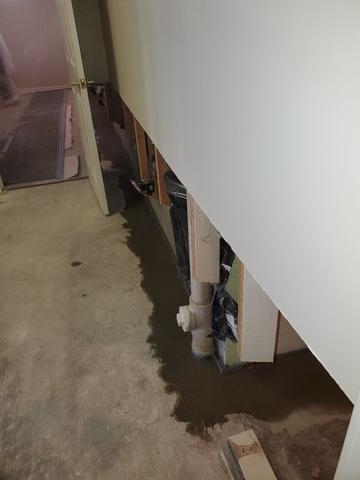Basement Waterproofing Experts - '58 Foundations Things To Know Before You Buy

The Ultimate Guide To Finished Basements Plus - Michigan Basement Finishing

Wet soil around and under any kind of structure will result in higher indoor humidity, higher threat of insect issues, and wear and tear of the majority of building products. Once inside the building, water vapor condenses on cool concrete surface areas, typically leading to mold and mildew on anything saved in the basement. If you later finish all or part of a basement without resolving the moisture problems, the carpets and home furnishings will grow musty and musty also, making the home less than "prime".

Home · New England Dry Basements : Your Basement Waterproofing Specialists for Your Wet Basement in Eastern Massachusetts : Sudbury MA, Framingham MA, Medford MA, Brookline MA, Worcester MA, Brockton MA, Leominster MA
In the worst cases, unmanaged water below a structure can wear down soils and undermine footings. Water can enter your basement two ways: as liquid water or as a gas, called water vapor. smartliving home repair services are essential and can cause a variety of issues if disregarded by home builders. Other than in arid climates, there is a great deal of water vapor in the soil, whether it is damp or dry, dense or granular.
Because water vapor takes a trip easily though concrete, block, and other masonry materials, you require to protect the foundation with either a finishing or membrane that will stop, or at least minimize, the circulation of water vapor. Where foundation drain is inadequate or the water table expensive, liquid water can construct up around the structure and put in hydrostatic pressure, forcing itself through any little opening and into the concrete itself.
7 Simple Techniques For Dry Otter Basement Waterproofing
Even without hydrostatic pressure, nevertheless, water from soil in contact with concrete will soak into the concrete by capillary action. Both the soil and concrete act like sponges, soaking up and carrying water towards the interior of the building. In England, they call this "rising moist." Place a stalk of celery in red-dyed water to understand.

Home · CT Dry Basements
Moisture passing through the concrete dissolves salts en route through and brings them to the surface area. When the water vaporizes into the space, the salt deposits are left. To stop the circulation of water under hydrostatic pressure is extremely hard and needs a basement developed like a boat and even boats have bilge pumps.
:no_upscale()/cdn.vox-cdn.com/uploads/chorus_asset/file/19490653/wet_basements_03.jpg)
Inground Gutters Keep Basements Dry - Fine Homebuilding
To stop the capillary transmission of water from soil to concrete needs a capillary break. This means a physical gap in between the water or wet soil and the foundation wall. This can be a waterproof membrane product, a layer of granular fill (gravel or crushed stone), or a made drain membrane that goes against the basement wall.
